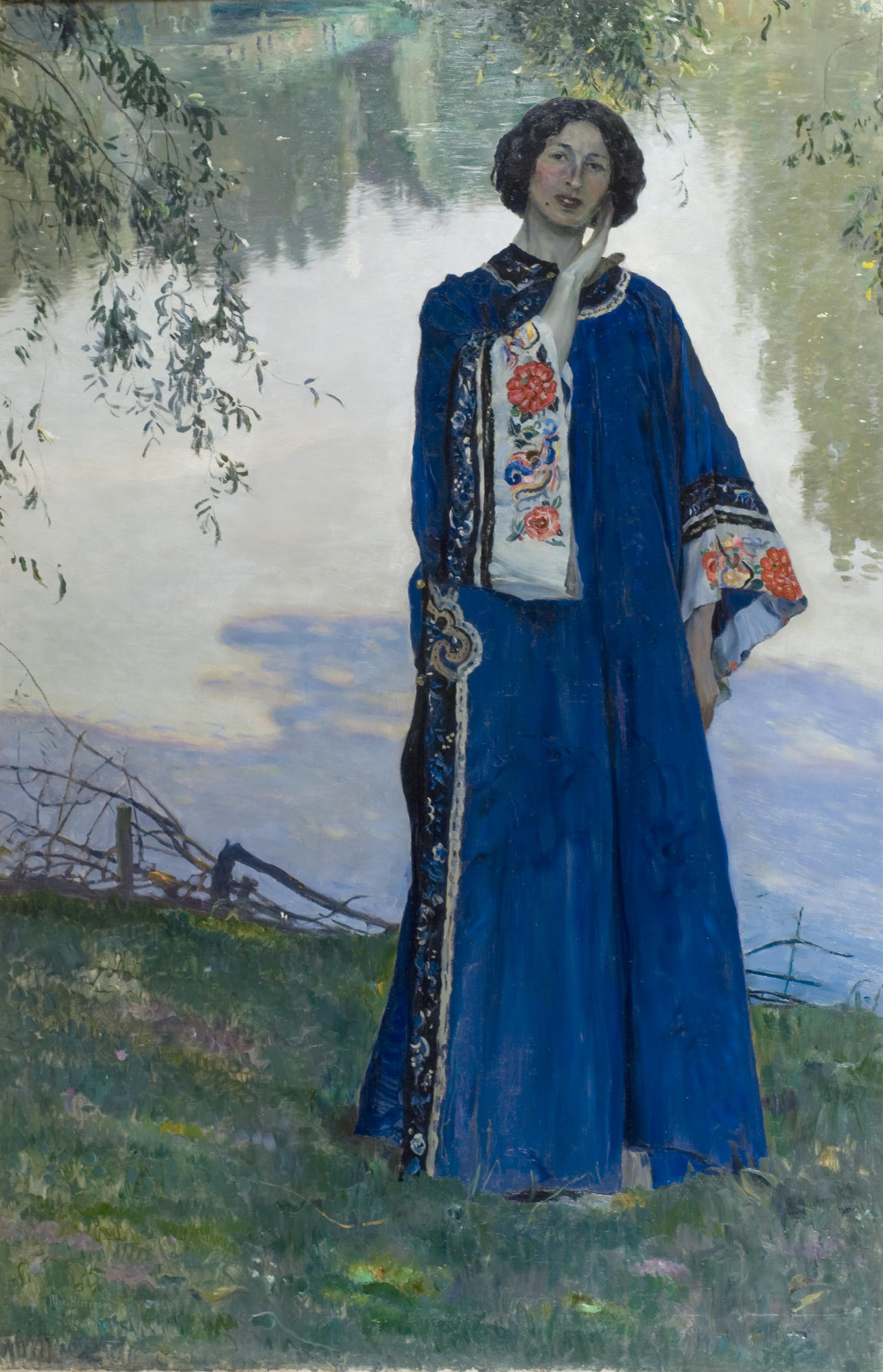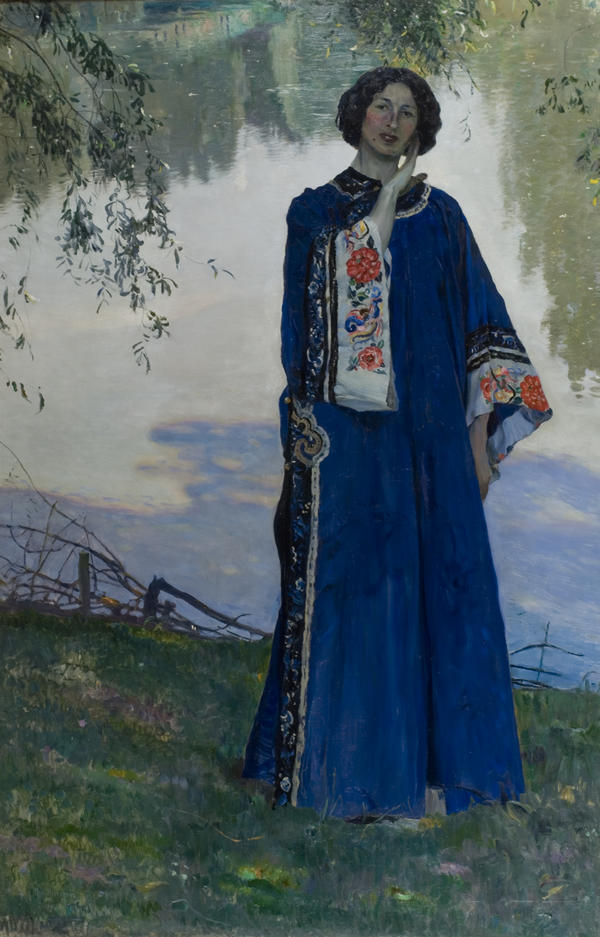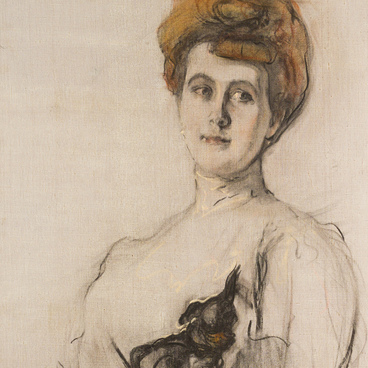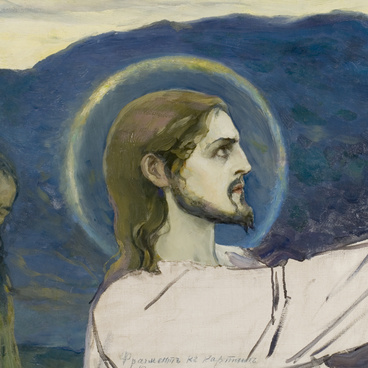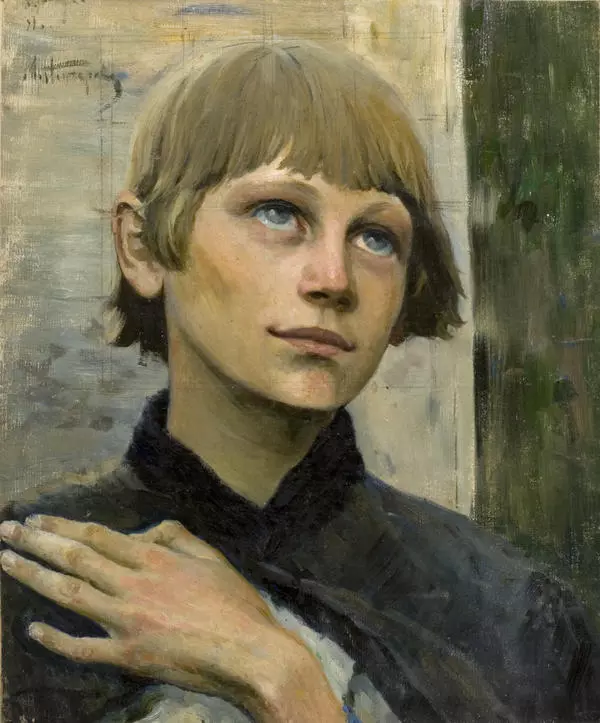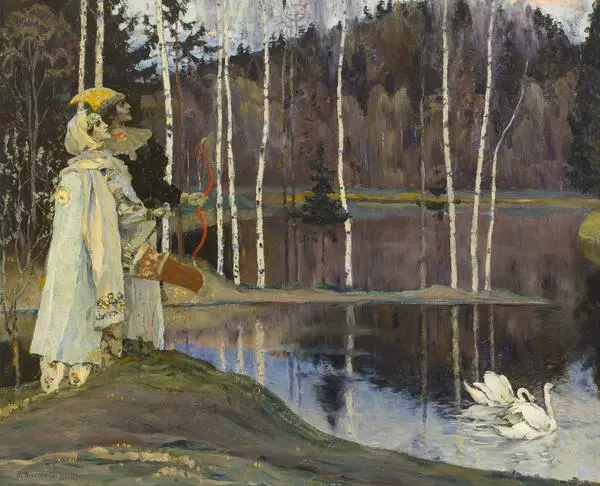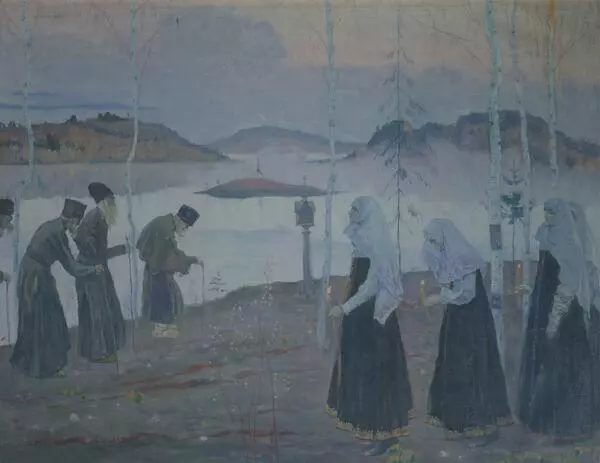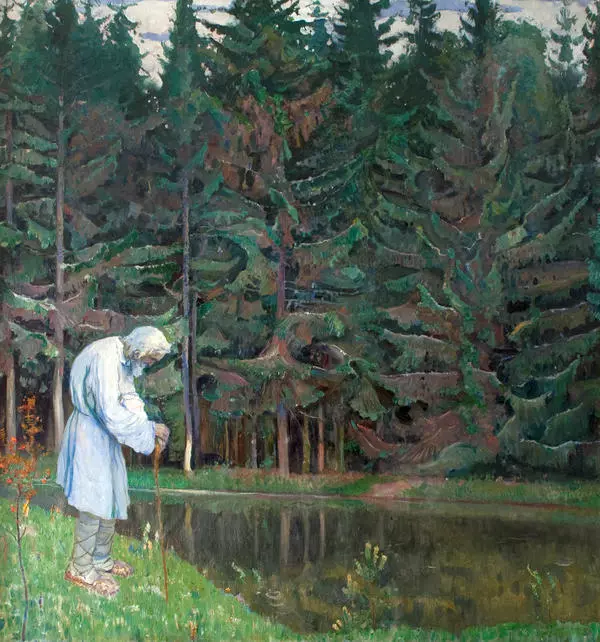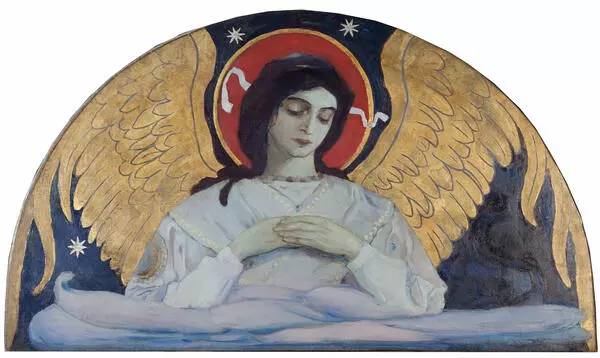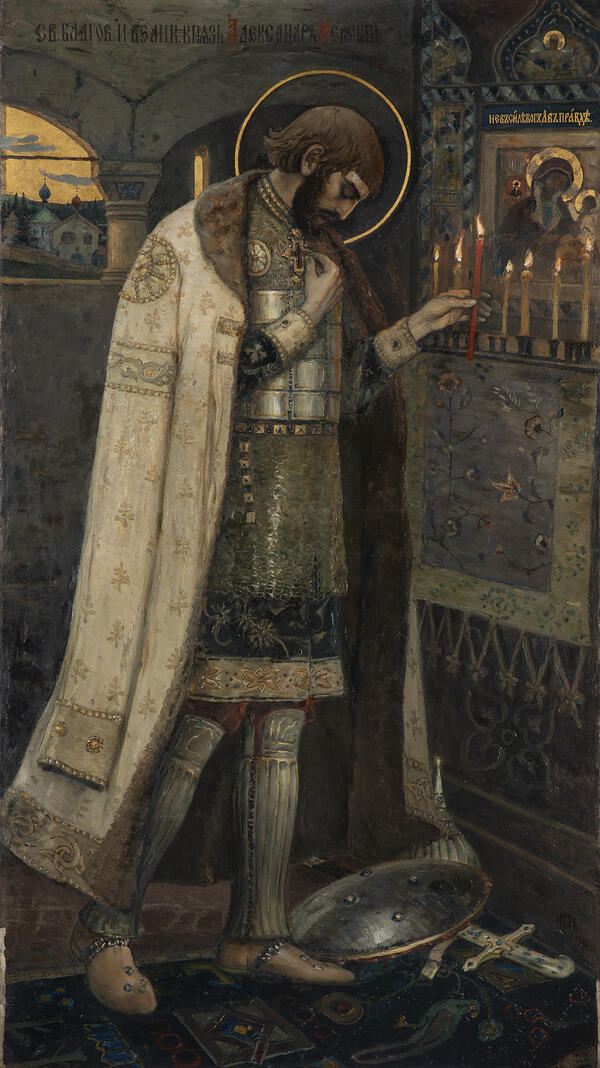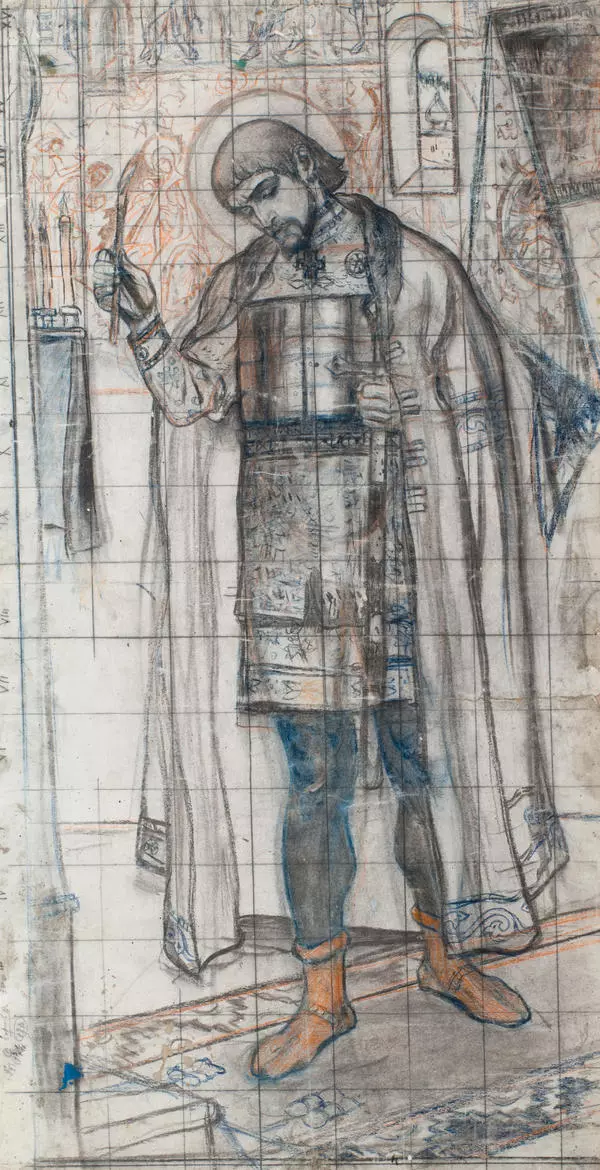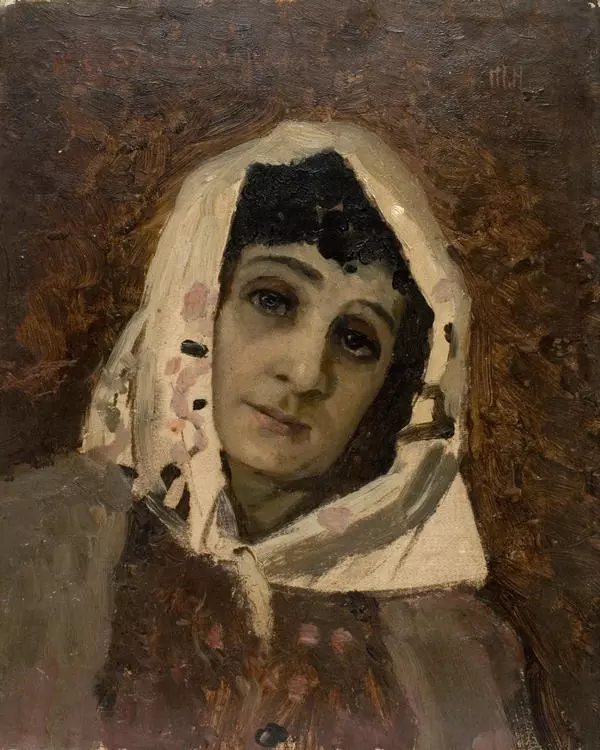The 1905 revolution and a crisis in his artistic pursuit urged Mikhail Vasilyevich Nesterov to look for new ways in his artwork. That is when he took up portrait painting. Later, in 1907, the artist admitted that after painting church mural icons in a Georgian village of Abastumani he was overly imbued with mysticism. Focusing on portraits helped him get down to real life.
The Portrait of E. P. Nesterova was painted in August 1906 in a small village of Knyaginino in the vicinity of the Sunki estate owned by a close friend of the Nesterov family, Princess Natalia Yashvik. The artist’s family lived in Knyaginino for nine years with short intervals. Mikhail Nesterov described those years as happy and memorable. Inspired by love, the artist created multiple images of his young wife on canvas.
In one of his letters to Ufa, Mikhail Vasilyevich mentioned that he “started work on a big open-air sketch of Ekaterina Petrovna in a Chinese gown”. The portrait was finished in the same year of 1906 and at once took a special place in Nesterov’s artwork.
By the time of the portrait painting, Mikhail Vasilyevich and Ekaterina Petrovna had lived together for four years, but their feelings were still fresh. The artist met his future wife in Kiev. She was a class warden in the Institute for Noble Maidens where his daughter Olga was a student. Ekaterina Petrovna visited the artist’s studio to see his painting Holy Russia. Her modesty and intelligence stole Nesterov’s hear at the moment they met. It is those properties that the artist appreciated the most in a woman.
In his letter from Kiev dated May 3, 1902, Mikhail Vasilievich described his acquaintance with Ekaterina Petrovna as ‘a major and unexpected event’. He open-heartedly shared his feelings and delight with those around him describing his beloved as an elegant woman of exceptional beauty and intelligence, as well as a dependable and selfless person.
The portrait fascinates the viewer by the charming appearance of the model. The artist successfully conveyed the emotional state of his character in full harmony with the surrounding nature. The young and beautiful woman in a graceful posture is depicted against the background of a pond, and her inner animation harmonizes with the almost palpable quiet of the surrounding landscape.
The composition and color scheme of the painting clearly reveals elements of modernism. The woman’s half-smile and coquettish posture, the domination of the purple-blue color with red and green accents – all that adds the elements of solemnity and mysticism to a conventional plain-air subject.
The Portrait of E. P. Nesterova was painted in August 1906 in a small village of Knyaginino in the vicinity of the Sunki estate owned by a close friend of the Nesterov family, Princess Natalia Yashvik. The artist’s family lived in Knyaginino for nine years with short intervals. Mikhail Nesterov described those years as happy and memorable. Inspired by love, the artist created multiple images of his young wife on canvas.
In one of his letters to Ufa, Mikhail Vasilyevich mentioned that he “started work on a big open-air sketch of Ekaterina Petrovna in a Chinese gown”. The portrait was finished in the same year of 1906 and at once took a special place in Nesterov’s artwork.
By the time of the portrait painting, Mikhail Vasilyevich and Ekaterina Petrovna had lived together for four years, but their feelings were still fresh. The artist met his future wife in Kiev. She was a class warden in the Institute for Noble Maidens where his daughter Olga was a student. Ekaterina Petrovna visited the artist’s studio to see his painting Holy Russia. Her modesty and intelligence stole Nesterov’s hear at the moment they met. It is those properties that the artist appreciated the most in a woman.
In his letter from Kiev dated May 3, 1902, Mikhail Vasilievich described his acquaintance with Ekaterina Petrovna as ‘a major and unexpected event’. He open-heartedly shared his feelings and delight with those around him describing his beloved as an elegant woman of exceptional beauty and intelligence, as well as a dependable and selfless person.
The portrait fascinates the viewer by the charming appearance of the model. The artist successfully conveyed the emotional state of his character in full harmony with the surrounding nature. The young and beautiful woman in a graceful posture is depicted against the background of a pond, and her inner animation harmonizes with the almost palpable quiet of the surrounding landscape.
The composition and color scheme of the painting clearly reveals elements of modernism. The woman’s half-smile and coquettish posture, the domination of the purple-blue color with red and green accents – all that adds the elements of solemnity and mysticism to a conventional plain-air subject.
